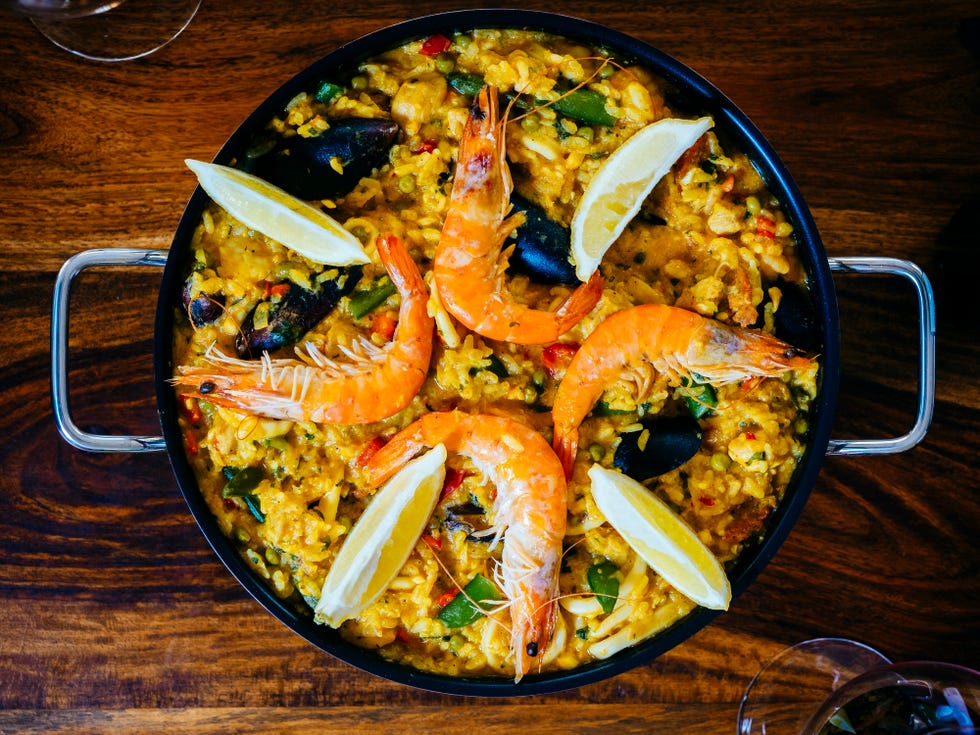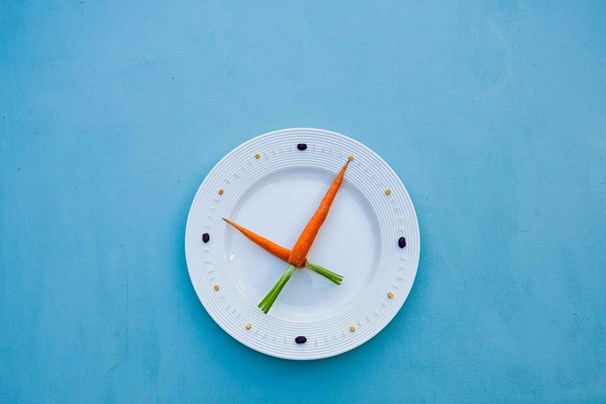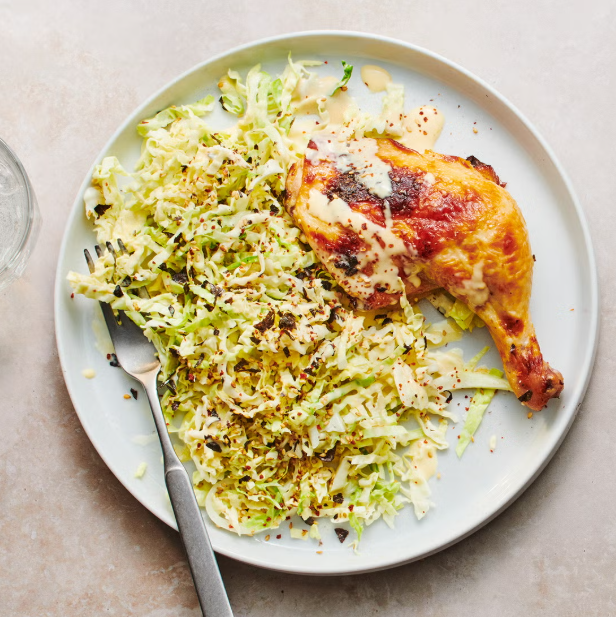RICE HAS BEEN around longer than many other foods. And its nutritional impact on humanity has been major—so why do people still think rice is bad for you?
“Rice is a grain that is eaten all over the world,” says Dana Ellis Hunnes, Ph.D., M.P.H., R.D., senior clinical dietitian at UCLA Medical Center and assistant professor at UCLA Fielding School of Public Health. “It’s a staple. It is not a food we ought to be afraid of or made into a villain.”
Sure, rice is a high-carbohydrate food. But no matter what your TikTok nutritionist says, carbs aren’t bad. Really.
Your brain and muscles thrive on carbohydrates (or glucose), and use the nutrient as a main energy source.
“Our brains use five grams of glucose every hour to function,” says Ellis Hunnes. That’s 120 grams of glucose per day. One-third cup of cooked rice has 15 grams of carbohydrates.
So, yes, rice is ridiculous good for you (and ridiculously delicious). We had dietitians break down the nutrition specs of rice to prove it.
Is rice healthy?
RICE PROVIDES LOADS of nutrients our bodies need. It’s nutritional components depend largely on the type of rice.
Brown rice is often considered to be preferable to white rice, but the grains actually come from the same plant.
“Rice is the seeds of grains or grass plants that grow in water-submerged fields,” says Annelie Vogt von Heselholt, R.D., founder of DietitianDoc. “During harvesting and processing, when only the outer hull layer is removed, you get brown rice, which is considered a whole grain. Further removal of the hull and bran layers leaves what we know as white rice,” she says.
“Rice—especially brown rice—is also rich in fiber, manganese, selenium, iron, magnesium, copper, and B vitamins. Fiber, in particular, can help the digestion of food, improve cholesterol levels, and help you feel full longer, which is important in weight management,” she says.
There’s no need to knock white rice, however.
“All rice consists of carbohydrates with a small amount of protein and minimal fat. Brown rice is a whole grain. Meaning that it contains all the parts of the grain—the fibrous bran, nutritious germ, and carb-rich endosperm. White rice only contains the endosperm; the bran and germ are removed,” explains Johna Burdeos, R.D.. “Brown rice has more fibre, nutrients, and antioxidants than white rice but not a significant amount.”
Texture-wise, brown rice is often chewier and takes longer to cook, thanks to the bran and germ remaining intact. Regardless of the differences, Burdeos says both brown and white rice can be eaten as often as you like (in appropriate portions) as part of a healthy diet.
“[Rice] is a staple around the world. It is not a food we ought to be afraid of or made into a villain.”
Burdeos breaks down the macronutrients of a cup: “For one cup of cooked rice, brown and white rice are both around 200 calories. Both contain about 44 grams of carbohydrates. Brown rice has five grams of protein and white rice has four grams. White rice has less than one gram of fiber and brown rice has three to four grams of fiber. Fat is minimal in both: White rice has 0.4 grams of fat and brown rice has 1.7 grams of fat.”
But back to brown rice vs. white rice: One key takeaway, says Vogt von Heselholt, is to choose brown rice over the more processed white rice at least 50 percent of the time due to brown rice’s nutrition profile. Do your best to stick to about a half-cup serving size.
Beyond white rice and brown rice, there are other types of rice with positive health attributes, too.
“Indonesian and Thai black rice has the highest antioxidant values of all varieties of rice. It’s particularly high in anthocyanins, or plant flavonoids, that are anti-inflammatory and help fight cancer. Himalayan and Thai red rice varieties are high in fibre and other types of antioxidants called quercetins that help fight chronic disease and cancer,” says Vogt von Heselholt. “Wild rice, although a grass and not a grain, is commonly used as a grain. It provides three times the fiber compared to white rice and may be anti-inflammatory, anti-allergic, anti-hypertensive, and important for the immune system.”

“A serving of cooked rice is equivalent to ½ cup because it’s such a concentrated source of energy. Men should limit it to about eight or so total grain servings per day, depending on age and activity level,” shares Vogt von Heselholt.
It’s also a base that you can load up so many different ways to get a fully balanced meal. Mix it with veggies and protein, and flavor up with spices and herbs however you’d like. It’s incredibly versatile.
Is it good for weight loss?
YES.
“Although rice is high in carbohydrates, brown rice, in particular, can be beneficial for weight loss. Because the outer bran layers are left intact on brown rice, it’s high in fiber. Fiber can help the digestion of food, slow the emptying of the stomach, and help you feel full longer, all of which are important for weight management,” says Vogt von Heselholt, noting that brown rice also requires more chewing which naturally lends itself to you eating smaller portions.

But there are some caveats to note when upping your rice consumption: “Some studies have linked large amounts of white rice consumption with metabolic syndrome or risk factors that may put you at higher risk for developing heart disease, stroke, and diabetes,” says Burdeos.
Still, as she points out, other studies have found no correlation between white rice and obesity. As always, any food is best in moderation.
Ellis Hunnes stresses that rice can be good for weight loss in conjunction with an overall healthy diet. “Rice is not particularly high in calories, though it is higher than some foods of course. The thing about rice is that it expands to 3x its original volume, so it can be quite filling and, depending on variety, relatively high in fiber,” she says. “Brown and black rice will be healthier than white rice because of their extra fiber and extra antioxidants, especially black rice.”
This article originally appeared on Men’s Health US.
Related:















